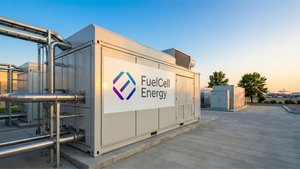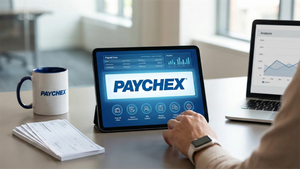By Ernest Dela Aglanu, Benzinga
To learn more about Save Foods, download the latest research report here
September 29 every year has been set aside by the Food and Agriculture Organization (FAO) of the United Nations (UN) as the International Day of Awareness of Food Loss and Waste. Since 2020, the day has raised awareness to reduce food loss and waste while urging for the building of a more resilient food system.
On the day, there are calls to action for people, including the public and private sectors, to prioritize efforts and initiatives to cut food waste and loss to enhance the efficient use of natural resources, mitigate climate change, and support food security and nutrition.
The FAO estimates that around 14% of the world’s food is lost after harvest, while about 17% is wasted in retail and at the consumption level.
Zooming in on the U.S. alone, while the world wastes about 1.4 billion tons of food every year, America discards more food than any other country — nearly 40 million tons annually, estimated to be about 40% of the entire U.S. food supply.
This doesn’t look good, especially as the United Nations Development Programme (UNDP)’s Sustainable Development Goals (SDG) 2030 calls for halving per capita global food waste at the retail and consumer levels and reducing food losses along production and supply chains.
Time May Be Running Out
But with seven years left to reach this all-important target, there seems to be a need to urgently scale up action to reduce food loss and waste to meet the SDG.
Reducing food loss and waste presents an enormous opportunity for immediate climate benefits while improving the overall sustainability of food systems that ensure nutritional outcomes for current and future generations.
There are growing efforts to reduce food loss and waste from government initiatives, digital technologies, responsible waste management, and companies like Japan’s Kuradashi buying food products that cannot be sold.
In the U.S., food retail giants like Walmart Inc. (NYSE: WMT), Amazon.com Inc. (NASDAQ: AMZN), and Kroger Co. (NYSE: KR) have also outlined measures to curtail food loss and waste. Walmart, for example, announced it plans to eliminate $2 billion in waste over the next five years.
Save Foods: Helping Shape The Future Of Fresh Produce
For the past 14 years, Save Foods Inc. (NASDAQ: SVFD) has been tackling food safety and waste.
The company and its Israeli operational arm (subsidiary), Save Foods Ltd., have been dedicated to delivering integrated green solutions for improved food safety, freshness, and quality, every step of the way from field to fork.
Save Foods says it is addressing two of the most significant challenges in the agri-food tech industry — food waste and loss and food safety.
The company, since 2009, has been collaborating closely with growers, packers, food retailers, and service providers around the globe to develop new solutions, treatments, and products to extend the shelf life of fresh produce. The company believes this ensures its safety while reducing (and in some cases even eliminating) the use of the hazardous chemicals used today.
Save Foods’ technology allows growers, packers, and food retailers to reduce their waste and increase their revenues, with more food ending up on plates and less in landfills.
The company’s treatments, which combine its proprietary blend of food acids and oxidizers, were commercially validated on citrus fruits, mangos, avocados, pears, bell peppers, berries, and various fresh-cut vegetables.
Giving a peek behind the curtain in the new year, Dan Sztybel, CEO of Save Foods Ltd. said: "Currently almost 50% of the fresh fruits and vegetables produced will never reach our plate. We use the inside of the fruit to protect the outside. According to Dror Eigerman, CEO of Galilee Export and member of Save Foods' advisory board, after implementing Save Foods' innovative treatment on several product lines - including avocados, peppers, and mangoes - a few of his customers in the EU informed him that they have noticed higher quality and longer freshness of produce. I believe that when more retailers and distributors learn about Save Foods' innovative treatment and its potential benefits, the demand for the treatment will increase exponentially."
Head to Save food’s website to learn more about the company and its technology.
This article was originally published on Benzinga here.
Save Foods is an innovative, dynamic company addressing two of the most significant challenges in the agri-food tech industry: food waste and loss and food safety. We are dedicated to delivering integrated solutions for improved safety, freshness and quality, every step of the way from field to fork. Collaborating closely with our customers, we develop new solutions that benefit the entire supply chain and improve the safety and quality of life of both the workers and the consumers alike. Our initial applications are in post-harvest treatments in fruit and vegetable packing houses processing produce including citrus, avocado, pears, apples and mangos. By controlling and preventing pathogen contamination and significantly reducing the use of hazardous chemicals and their residues, Save Foods treatment not only prolong fresh produce shelf life and reduce food loss and waste, but they also ensure a safe, natural, and healthy product.
This post contains sponsored advertising content. This content is for informational purposes only and is not intended to be investing advice.
Contact Details
Adam Holdsworth - TraDigital IR




